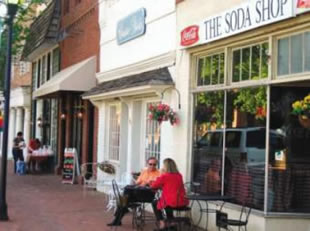Davidson, North Carolina, population 7,100, isn't the kind of global metropolis that is normally looked to as a cutting-edge example of sustainable transportation planning.

But a new series from Transportation for America holds up tiny Davidson as a national model for the country's smaller cities. T4America is highlighting Davidson's success as part of a series on livability and smart growth in 12 rural areas and small towns.
Davidson has seen a sharp hike in population since 2000, but by increasing transportation options and revitalizing Main Street, the town was able to preserve its character and community. Davidson was the 2004 recipient of a National Award for Smart Growth Achievement from the U.S. EPA.
The key to Davidson’s success, according to Town Planner Kris Krider, was connecting each new housing or commercial development with travel options and broadening the definition of how people move. “Sitting in traffic is not one of the themes of livability that we think is valuable,” Krider said. “It could be a walking path. It could be bike paths. Connectivity is not just streets, it’s connecting people.”
T4America is running the series, in part, in support of the Livable Communities Act, as a response to senators who say the bill won't help rural areas. So far they've also highlighted smart growth leaders in Laconia, New Hampshire; Cache Valley, Utah; Menominee Indian Reservation, Wisconsin and Huron, South Dakota, with more to come.
Elsewhere on the Network, Walk Bike New Jersey is helping the League of American Bicyclists build a campaign on behalf of the Active Community Transportation Act; Charleston Moves examines the city of Cincinnati's decision to reopen a number of one-way streets to two-way traffic; and SFBart's Blog highlights the expiration of federal funds to promote public transportation in San Francisco on days when ozone pollution is most hazardous.






